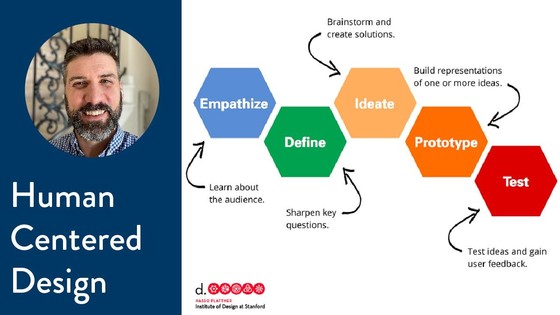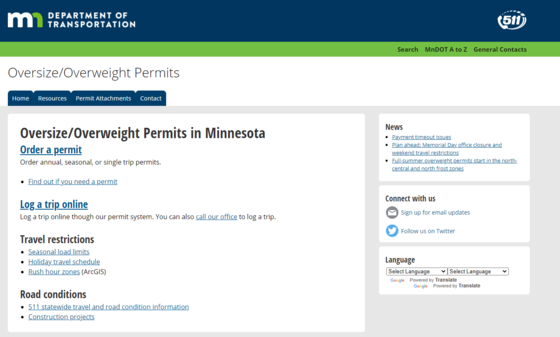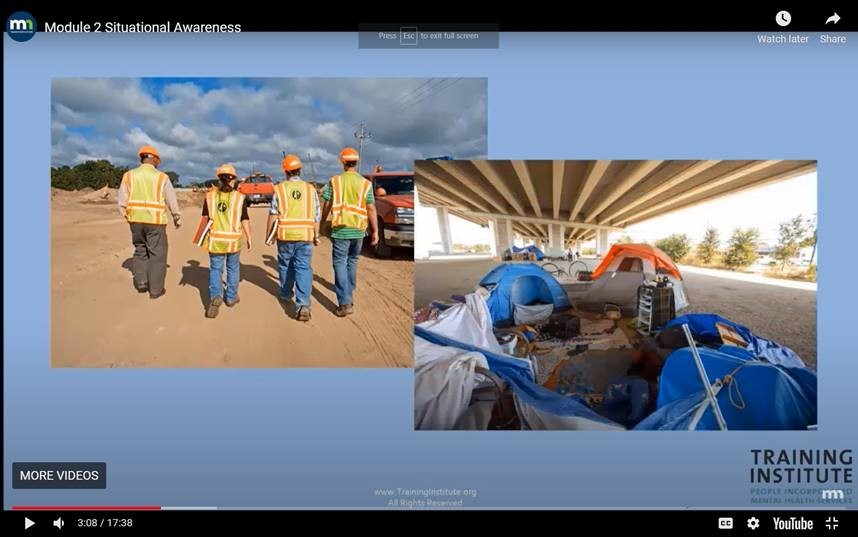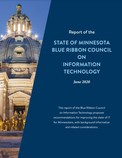MnDOT Innovation Focus


Have you developed a new practice that is helping your team work smarter, faster, or safer? You can help others adopt this innovation nationwide!
MnDOT is participating in AASHTO’s Innovation Initiative Solicitation, which is seeking proven advancements in transportation technology that save time or money.
Innovations selected by the AASHTO Executive Committee will receive tools and funding to adopt the advancement throughout the agency or share with fellow state DOTs.
To nominate your innovation:
- Review nomination criteria
- Download and complete the nomination form
- Send the completed nomination form to your manager for approval
- Managers will route nominations to the Office of Research & Innovation by September 1 for review and submission to AASHTO by September 3
Nominations are due September 1, 2021 to the Office of Research & Innovation.
|
 How can strategies used to develop popular business products be used to build government services and processes that serve the public better?
Human-centered design is a creative approach to solving problems that starts with the people you are designing for and ends with new solutions tailored to suit their needs.
In a June 7 webinar, sponsored by the Office of Research & Innovation, innovation strategist Andy Zimney of Employee Strategies shared how MnDOT employees can apply human-centered design strategies from the business world to their own work.
What makes human centered design different than other approaches to problem-solving is its focus on human experience and using a diverse set of perspectives and disciplines to generate new ideas. It often produces better solutions more quickly and efficiently and can be applied to both large and small problems.
The key is removing one’s own lens. Zimney shared the example of a company that failed to increase milkshake sales with various tactics until researchers visited the fast-food line to observe consumers. Their discovery that early morning: solo motorists purchased milkshakes to occupy their commutes provided a whole different understanding of their user and opened new possibilities for other frozen drinks.
The five basic stages to the Human-Centered Design process:
-
Empathize: Learn about the audience.
-
Define: Sharpen key questions.
-
Ideate: Brainstorm and create solutions.
-
Prototype: Build representations of one or more ideas.
-
Test: Test ideas and gain user feedback.
Missed the webinar? Watch the YouTube recording of the Human Centered Design Lunch & Learn, with opening remarks from Commission Margaret Anderson Kelliher.
To learn more about innovation at MnDOT, visit the Office of Research & Innovation.
 On June 1, 2021, the Office of Freight and Commercial Vehicle Operations (OFCVO) launched a revised version of their oversize/overweight permits website. Unlike past revisions of the website that were based on what OFCVO staff thought customers needed, this revision was largely driven by what customers actually said they needed.
It began with a survey asking customers about their experience working with OFCVO and suggestions on how the office could improve. Insights from the survey, as well as web analytics data, revealed that most customers visit the website only to complete two tasks: order a permit or log a trip.
OFCVO then formed a project team, led by Jesse Johnson, External Communications and Training Coordinator, to take a deeper dive into better understanding the needs of customers and the issues they face when using the website. The team reached out to customers directly via email and phone conversations, and learned that one of the greatest challenges customers faced was that there was a lot of information on the website, making it hard to navigate and find what they needed.
This led the team to create a prototype of the website that was easier to navigate, focusing on customer’s top tasks, while removing any content that didn’t support customers in completing those tasks.
Once the prototype was finished, the team reached out to customers again to test out the new version of the website, while members of the project team observed how they used the site to complete various tasks. Though customers responded positively to the new design, they also provided critical feedback that the project team used to further refine the website prior to the final launch in June.
“One tester mentioned a few things that could have been switched in the order of the content. It was kind of surprising to all of us because sometimes we don’t know how our customers work,” said Barb Capistrant, senior permit technician and member of the project team.
This website revision is one example of a broader vision in OFCVO aimed at improving the overall customer experience. By incorporating customer feedback throughout the revision process, OFCVO was able to create a website to better serve the people that use it the most.
 At least 7,600 Minnesotans are homeless on any given night.
The number of people experiencing homelessness in Minnesota and nationwide has been on the rise in recent years. As these numbers grow, so does the likelihood of MnDOT staff encountering unsheltered people living along roadsides.
MnDOT’s Homeless Encampment Team worked with a consultant last year to develop a training curriculum - Safety in the R.O.W. for MnDOT Staff and People Experiencing Homelessness - to help field staff navigate the complexities of these encounters. These video modules are intended to be shown at various work locations. The team includes Metro District staff Dewayne Jones, maintenance superintendent; Brian Duffee, transportation program specialist 2; and Sheila Johnson Maintenance Operations engineer; and Kristie Billiar, ADA implementation coordinator; Bob Vasek (maintenance operations engineer, Office of Maintenance; Sue Lodahl, assistant state maintenance engineer; and Peter Morey, Roadway Data & Support director, from the Central Office.
This work stems from Heading Home Together, an interagency plan to prevent and end homelessness. Part of MnDOT’s commitment is to train staff on how to effectively interact with people experiencing homelessness. Select MnDOT staff also coordinate with social service and volunteer organizations who connect unsheltered homeless people to needed resources.
The seven training modules cover the unsheltered population; situational awareness; being prepared; interacting with people experiencing homelessness; site dangers; personal wellness and partnerships. The modules could be used as a topic at safety meetings or as standalone sessions.
Modules are intended for use in a group setting with the local supervisor facilitating a question-and-answer session after viewing. A discussion leader briefing module will assist supervisors in leading those group discussions. The Metro District conducted a pilot session in early March for two of the modules, followed by the remaining modules being done independently at truck stations and facilitated by the local truck station supervisor.
“The training modules that were developed have really helped our field folks to be more aware of encampments and what to do if they encounter one," said Dewayne Jones, a supervisor with Metro District Field Maintenance.
Plans call for the annual review of the modules by all Metro Maintenance field staff. The modules are available for statewide use depending on local need. Supervisors should contact their district safety administrator or employee development specialist about setting up a session and recording them in Pathlore for attendees.
In addition, MnDOT is conducting research to improve the safety of both staff and people experiencing homelessness. “Remote Sensing in Unsheltered Encampments” will test infrared and thermal technology for detecting human presence along highway rights-of-way. This recently funded project builds upon a transportation research synthesis, “Remote Sensing in Maintenance Work,” published last year.
 MnDOT engineers are donning mixed reality glasses to enhance their inspection of bridges. Bridge inspectors recently piloted mixed reality technology to process and view detailed 3D imagery of the Stone Arch Bridge, which was captured by drones. The case study was recently featured by Microsoft and Bentley Systems in a Microsoft technology forum and the following video produced in collaboration with Minnesota Department of Transportation and Collins Engineers, Inc.
|
Governor Tim Walz established the state’s Blue Ribbon Council on Information Technology in February 2019 to serve as an advisory group to the Governor and Lieutenant Governor on the development and implementation of Minnesota’s information technology (IT) systems.
The Blue Ribbon Council on Information Technology has released its report of recommendations, including proposals for improving the state of IT and advancing innovation in technology for all Minnesotans.
|
|
 |
This newsletter is produced by MnDOT's Office of Research & Innovation. Have a story idea? Let us know! If you have a question or need content in an alternative format, please contact our office at research.dot@state.mn.us or 651-366-3738.
|